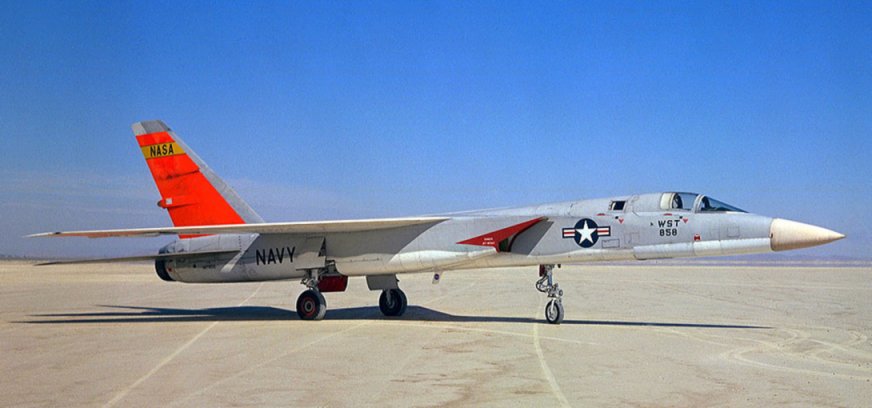|
Air Power |
The Vigilante, designed and built for the U.S. Navy by North American Aircraft Division at Columbus, Ohio, was the only Mach 2 bomber to serve aboard a Navy carrier. Initially designated the A3J-1 attack bomber, it was one of the largest and heaviest aircraft ever accepted for service aboard U.S. Navy carriers. Production began in 1956 and it entered squadron service in June 1961. It was redesignated the A-5 and fully deployed by August 1962, when the USS Enterprise, the Navy's first nuclear aircraft carrier, made its inaugural cruise.
A serious design shortcoming involved the unique linear bomb bay. In simple terms it consisted of a tube running inside the fuselage, between the two engines. The weapon was loaded through an opening between the two jet exhausts. Weapons ejection was also effected via this opening, with a solid fuel cartridge used to propel the device clear of the aircraft once the jettisonable tail-cone faring had been ejected. The weapons bay was considerably longer than the nuclear weapons which the Vigilante was originally intended to carry therefore some of this space was utilized for additional fuel. This fuel was contained in two jettisonable tanks located aft of the weapon and linked to it. The tanks, which were ejected with the bomb, acted as aerodynamic stabilizers for the bomb's free-fall to the target.
Although a viable system in theory, in actual practice difficulties were encountered in clearing the linear bomb bay during operational use. At the same time a major shift in Navy policy deleted the strategic bombing role. Consequently plans to produce the improved Vigilante attack-bomber were abandoned after it had reached the flight-test phase.
Changing defense strategies marked a change of focus away from carrier-based, heavy attack squadrons. In 1964, all the Vigilantes were reconfigured as reconnaissance aircraft and designated RA-5C. Reconnaissance gear was mounted in what had been the Vigilante's bomb bay. Other modifications allowed the RA-5C to carry four external fuel tanks. These additions increased the airplane's range on reconnaissance missions and allowed it to keep its attack capability with externally mounted bombs and rockets.
The RA-5C Vigilante first flew on June 30, 1962, and was capable of all-weather, long-range, carrier- or land-based, multisensor, reconnaissance missions involving high-altitude supersonic, or very low-altitude, high-speed penetrations. Its inertial navigation system provided the precise position location information demanded. The Vigilante pilot and the reconnaissance/attack navigator (RAN) sat in tandem under individual clamshell-type canopies. The RAN controlled all reconnaissance functions, although the pilot could assume control of the oblique-mounted serial frame cameras. Each crewmember had a catapult/rocket-powered ejection seat, also designed and produced at the Columbus facility, capable of high-altitude, high-speed, or ground-level recoveries.
The combination of the RA-5C Vigilante's ability to deliver conventional weapons, day or night in all kinds of weather, as well as to complete tactical reconnaissance missions made it one of the most versatile aircraft in the world. RA-5Cs served throughout the Vietnam War and were retired from service in 1979.
It was one of the biggest aircraft that ever operated from a carrier.
Specifications:
Primary Function: Tactical reconnaissance, carrier-based attack aircraft
Contractor: North American / Rockwell
Crew: Two (pilot, navigator)
Powerplant: Two turbojet General Electric J79-GE-8 engines (10,800 lb each)
First Flight: August 31, 1958
End of Service: November 20, 1979
Dimensions:
Length: 76 ft 6 in (23.32 m)
Wingspan: 53 ft (16.15 m)
Height: 19 ft (5.79 m)
Weights: Empty: 37,500 lb (17,009 kg) / Maximum Takeoff: 79,588 lb (36,094 kg)
Performance :
Speed: 1,385 mph (2,230 km/h)
Ceiling: 48,400 ft (14,752 m)
Range: 1,500 miles (2,415 km)
Armaments:
1 nuclear weapon, and conventional weapons on two hard points

690502petit.jpg)







All photos Copyright of aviaweb.calexo.org

